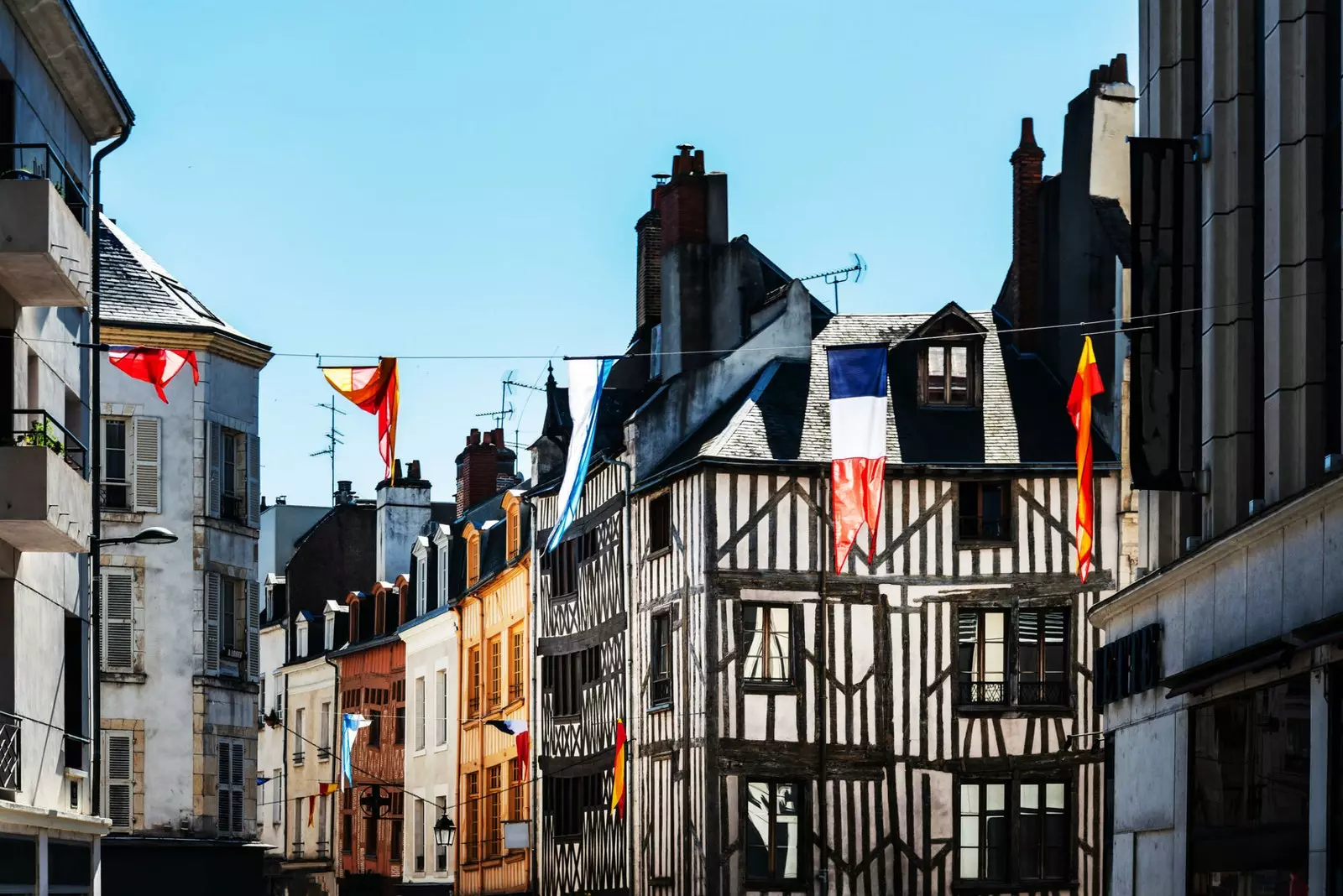
Half-timbered facades in Orléans.
It is no longer that Paris has an endless supply of things to visit and discover, it is that its fantastic location on the map allows it to having dozens and dozens of locations and environments that deserve a getaway within a stone's throw, in case you want to get away from the big capital for a bit.
As we do not know if you are going to have a car, we have thought of destinations you can reach by train in less than two hours. Of course, this is a small selection of some of these corners, obviously there are many more!
**ROUEN (ONE HOUR AND A HALF BY TRAIN) **
One of our favorite destinations. Visit the capital of the region of Normandy is mandatory for all those who already know Paris well, who in just an hour and a half by train from the Saint-Lazare station will immerse themselves in its medieval-scented streets.
Although the cathedral –which we will delve into later– is the icon of Rouen, thanks to **the series of paintings that inspired the impressionist author Claude Monet,** it is advisable to have enough time to visit several of its other monuments .
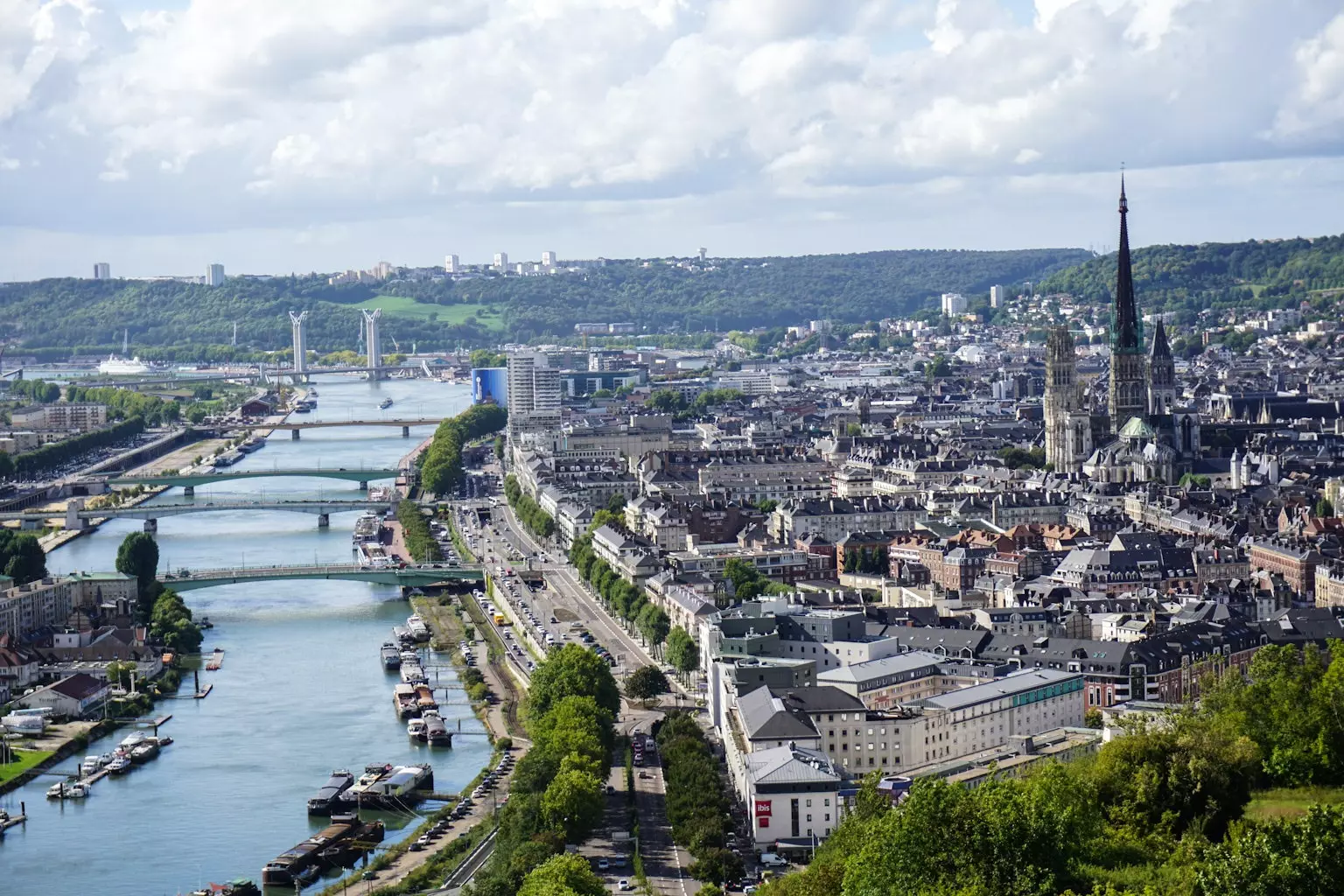
Rouen, capital of the Normandy region.
One of them, which we will allow ourselves to highlight as our little right eye, is the spectacular abbey church of Saint-Ouen, in Gothic style. Its exterior part is so impressive that many confuse it with the cathedral, but its interior also leaves many mouths open.
The church, although by no means in ruins, is in practical disuse and its corridors, completely bare (no, there are no benches), generating a feeling of romantic abandon. It gives the impression that the temple, proud, wanted to demonstrate that it does not need more than its high walls, its great luminosity and its silence, only interrupted by the fluttering of the pigeons that slip through the broken windows, to prove its majesty. And indeed, it is.
In good weather, its exterior adjoining gardens are a good place to rest. And right next to it, in what was formerly the dormitory of the monks of the abbey, is the town hall of the city.
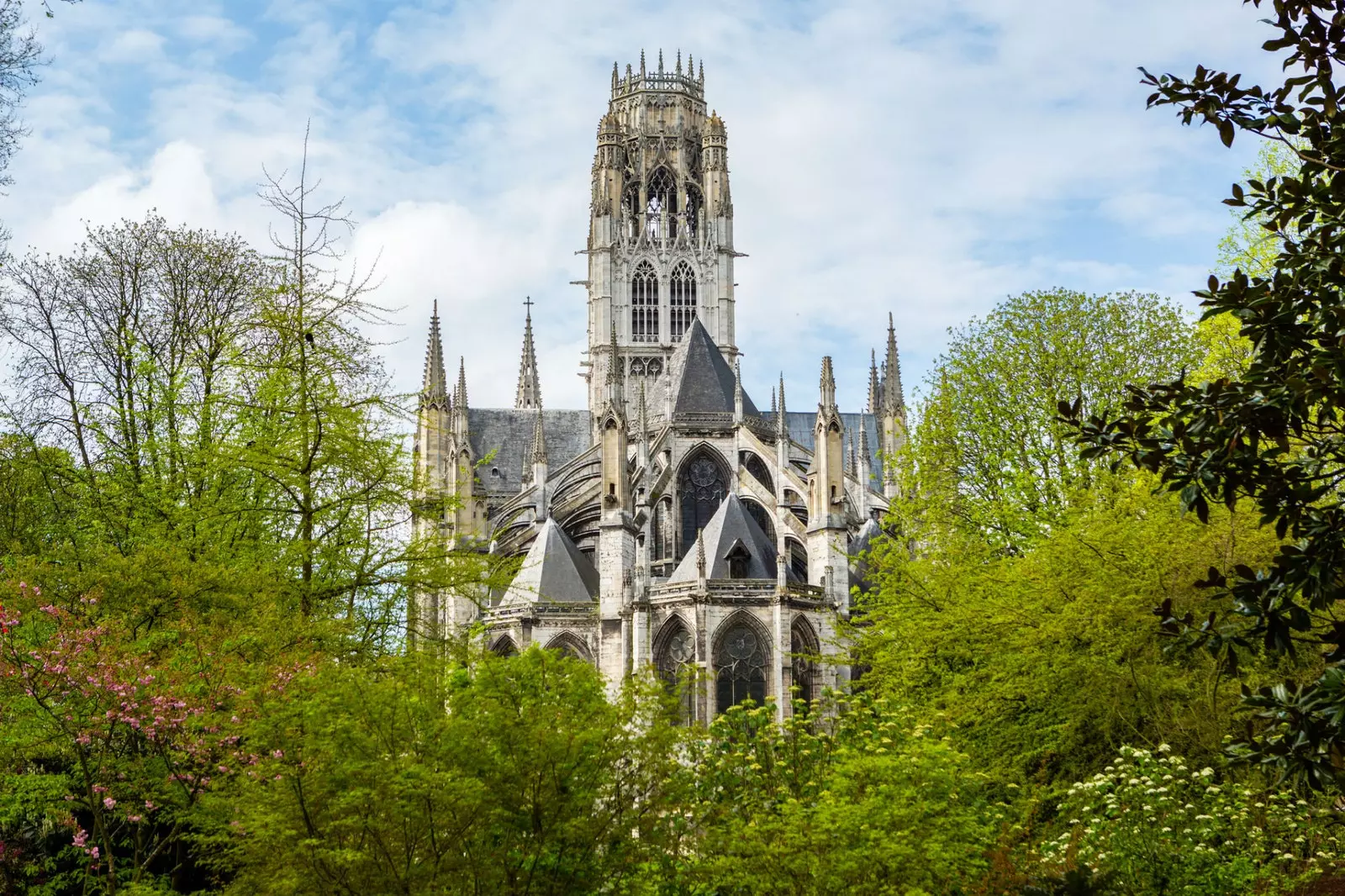
Gothic in style, the abbey church of Saint-Ouen is our favorite monument in Rouen.
Going down towards the Seine river, which also crosses Rouen, and very close to the cathedral, we find the church of Saint Maclou. In a Gothic style very similar to the other iconic temples in the city, this monument stands out for its fantastic carved wooden doors, dating from the Renaissance.
At the foot of the main entrance of the church is one of the most picturesque corners of the Norman capital: Barthélémy square and Malpalu street. We love this area because it is made up almost entirely of buildings with half-timbered facades, a deep medieval exaltation in the heart of Rouen. This charming corner is located two steps from the cathedral.
How could it be otherwise, the symbol of the city is in the Gothic style and its exterior front part, like Monet, will leave you amazed, with its many small statues and its heterogeneous towers.
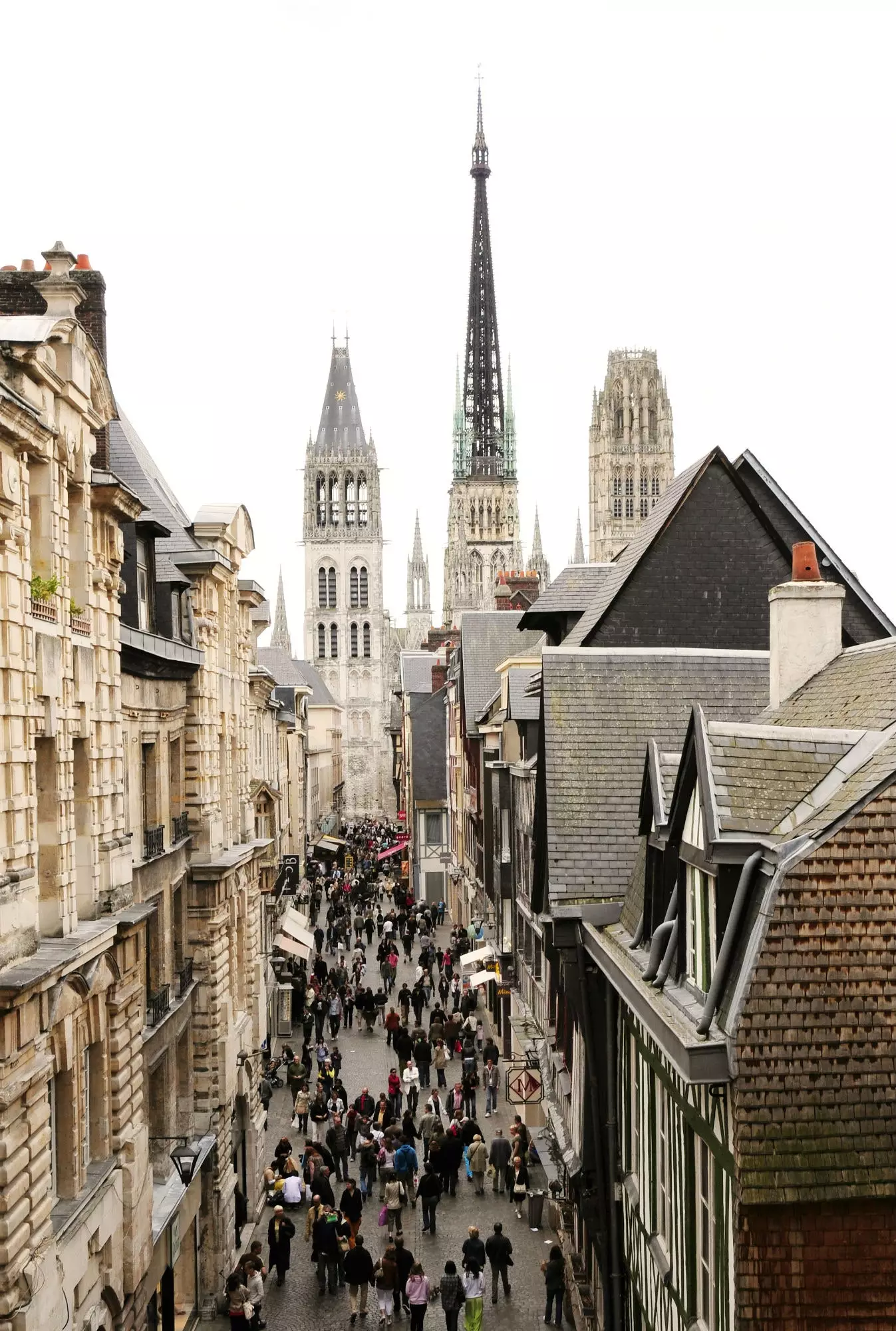
The iron spire of Rouen Cathedral makes it the tallest in France.
The north tower is the 'sharp' one, while the apex of the south is shaped like an octagonal crown. Behind these guardians rises the iron spire that allows the cathedral to reach up to 151 meters, making it the highest in France.
The monument suffered major damage in the final years of World War II, but was saved thanks to extensive reconstruction work. Once inside, we recommend paying attention, apart from the windows, to the so-called bookseller's staircase, a unique element of the temple that may seem rough at first glance, but that you can guess a certain elegance if you pay more attention to it.
You cannot finish your visit to the Norman capital without approaching the Gros Horloge, a large ornate astronomical clock installed in an arch from the Renaissance period, located on the main street that leads to Rouen Cathedral. It is not a bad idea, by the way, to stop for lunch in one of the many places that populate that street.
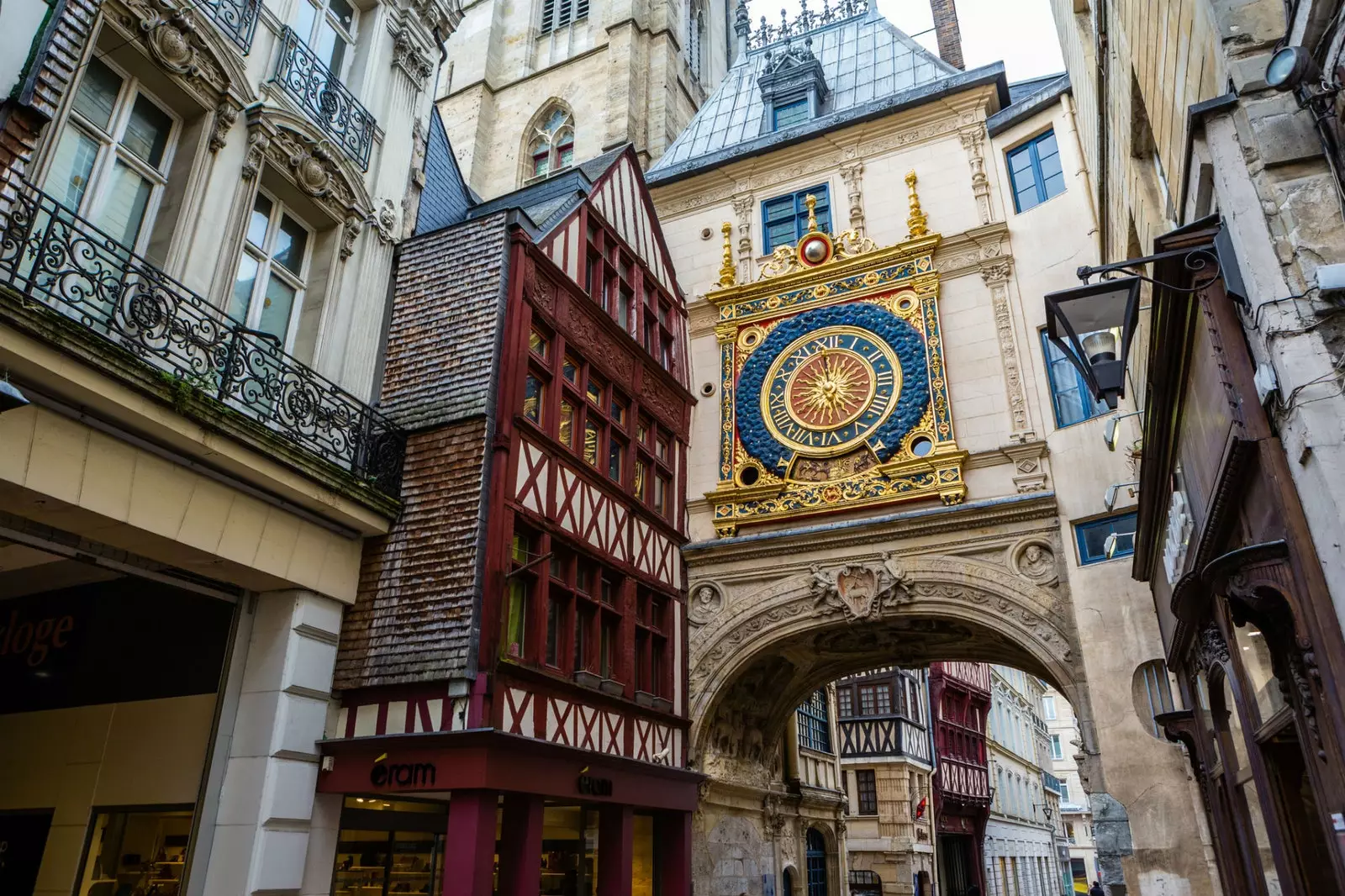
Gros Horloge, an astronomical clock installed in a Renaissance arch in Rouen.
**FONTAINEBLEAU (45 MINUTES BY TRAIN) **
spend the day in Fontainebleau is one of the most popular excursions among the people of the capital thanks to its easy access (direct trains leave from the important Gare de Lyon and the journey takes less than an hour) and the beauty of the place. Some They say that he is the little brother of Versailles, but it is fair to point out that Fontainebleau has enough elements to differentiate itself from the famous palace.
This city located about 60 kilometers from Paris has its palace and its adjacent gardens as its main course. The complex was one of the many residences of the French monarchs and it remained as such for eight centuries, a figure to be highlighted.
In addition, it hosted important historical events, as it was here that the Edict of Fontainebleau was signed –against the Gallic Protestants– and the Treaty of Fontainebleau, which agreed to the joint Franco-Spanish invasion of Portugal at the time of Napoleon Bonaparte, which would later lead to the French occupation of Spain.
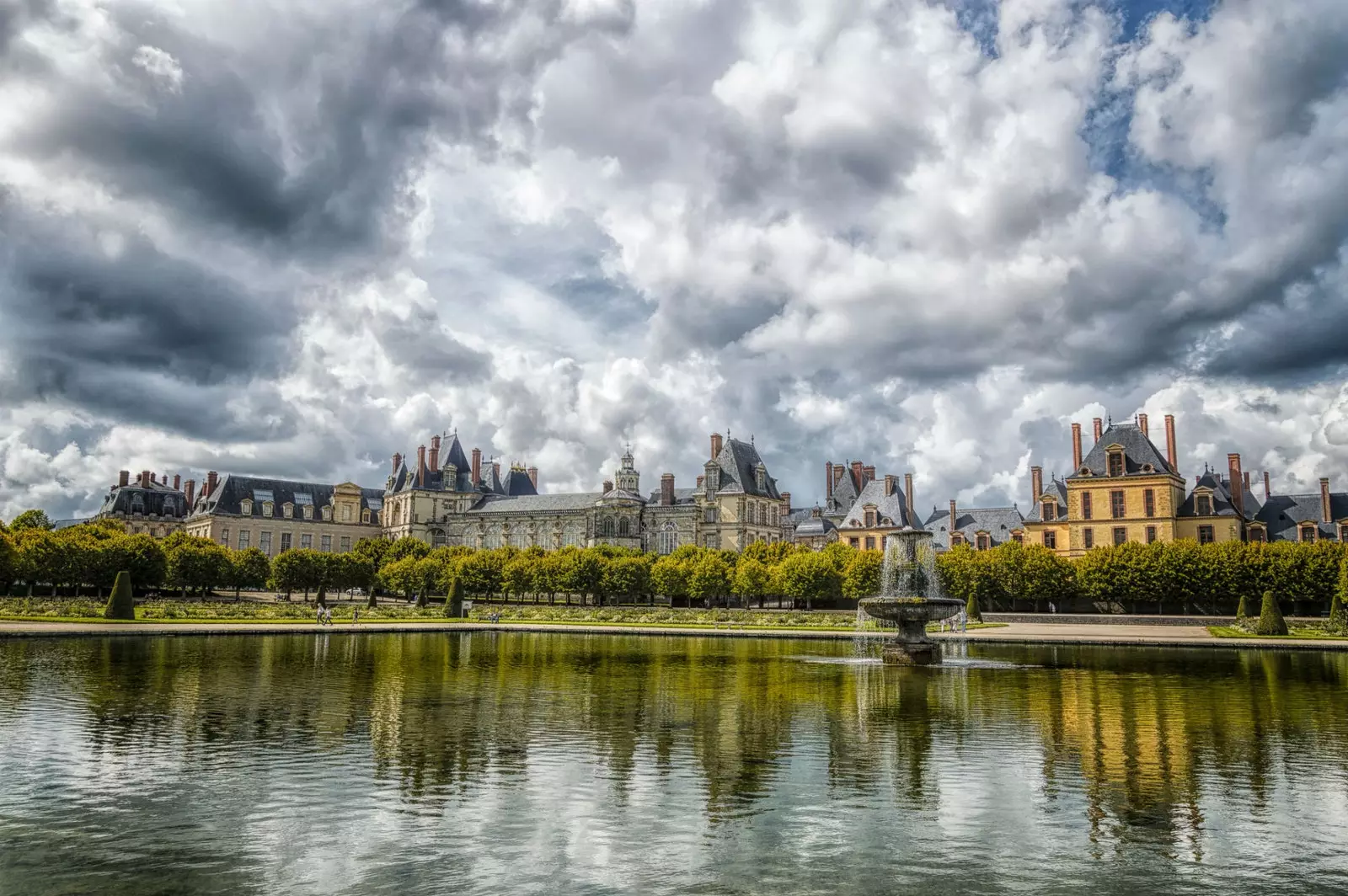
They say that Fontainebleau is the little brother of Versailles.
Although it is worth knowing the interior of the palace and soaking up its history, the jewel in the crown is the gardens. Undoubtedly smaller than those of Versailles, they are not far behind in terms of beauty. In spring and summer the leafiness of its vegetation is dazzling and the lake located at the foot of the palace gives the setting a picture of a postcard.
The walk through the gardens is just an appetizer for the whole hiking that we can do in the nearby Fontainebleau forest and in the Gâtinais Regional Natural Park. While the first is more suitable for hiking in its most basic expression, in the park, apart from walking among the trees, we have numerous activities, some of which –educational farms, bicycle or horse rides– are very attractive if we travel. with children.

Hiking in the Forest of Fontainebleau.
**ORLÉANS (ONE HOUR AND A QUARTER BY TRAIN) **
It's called Orléans but ok the name could be changed to 'City Joan of Arc'. Since its liberation in the Hundred Years' War (1337-1453) against the English, a turning point for the final Gallic victory, this town in the Loire Valley has been forever associated with what is today the patron saint of France.
Though all over the country there are streets in honor of his name and statues that represent her, Orléans is where this woman is worshiped the most, finding references to her practically behind every corner.
Today It is very pleasant to walk through the center of this historic city, but at the beginning of the 21st century abandonment, insecurity and crime were protagonists. It was from 2002 when work began on the resurrection of the capital of the Centre-Val de Loire region and we can say that the result is more than satisfactory.
A good place to perceive this improvement is Martroi Square, located very close to the city's central station and reputed to house a large equestrian statue of the Maid of Orléans. The square –like up to a total of 21 streets in the center– is now entirely pedestrianized and from there you can go down to Joan of Arc Street, a fairly wide street embellished by the large flags that hang from the buildings that limit it and that flows into the Cathedral of the Holy Cross, the main monument of the town.
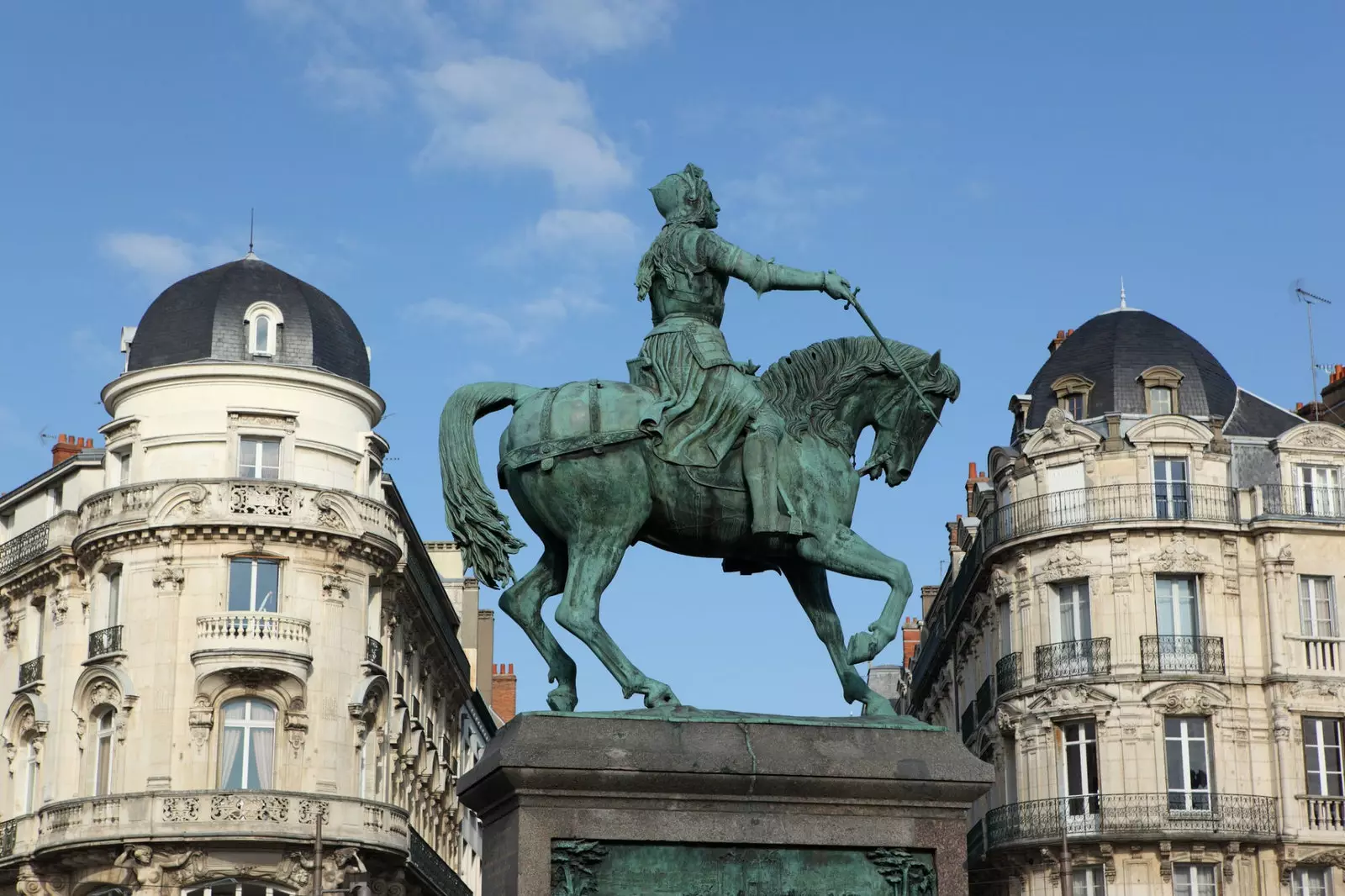
Statue of Joan of Arc in Orléans.
If you come to Orléans shortly after visiting Rouen, you will surely be shocked by the differences between the cathedrals of both cities. While the Norman temple is, we may say, more daring, Orléans is characterized by its sobriety, as we can see with its two identical cylindrical towers.
Despite everything, it remains one of the largest cathedrals in France (114 meters high) and is also very old. Although it was officially inaugurated in May 1829, its construction began in 1287, almost 600 years apart in which the successive artistic styles left their mark, giving it that not-so-gothic image that looks today. Inside you will once again find flags hanging from the walls (what is happening to this city with flags?) And you will be able to learn about the history of Joan of Arc through her stained glass windows.
If you want to observe the Santa Cruz from another perspective, you only have to walk a few steps to reach the Hotel Groslot and its well-kept garden. East Renaissance mansion from the mid-16th century, with a striking red brick façade, it became the town hall, and it is a good idea to visit it to admire its tapestries, a new statue of Juana and the tranquil gardens. As long as, of course, no wedding is officiated inside, it is a highly demanded place to celebrate these events.
But if this visit does not convince you, your choice must be the Joan of Arc house. So called because it is the place where la Pucelle stayed during the siege of Orléans between April 29 and May 9, 1429, now this house with a half-timbered facade –an architectural option present in a few other buildings in the center– is a museum dedicated to the liberator of the city, the best place to learn about the history of this woman and separate the legend from the (dazzling) TRUE.
If you get hungry or want to relax with a drink, come to the Bourgogne street, a long road not far from the Loire river that is bursting with bars and restaurants. It is a very lively area where you can soak up the atmosphere of the city, as it is not only popular with tourists, but also with locals.
And after calming the hunger, we will have to lower the food, right? Also the object of the recovery process undertaken in the early 2000s, the riverbank is now an excellent choice for strolling and enjoying a peaceful atmosphere. But if that's not enough, on the outskirts of the city you can visit the Parc Floral de la Source, a place of idyllic gardens and flowers that in good weather is perfect to get lost for hours.
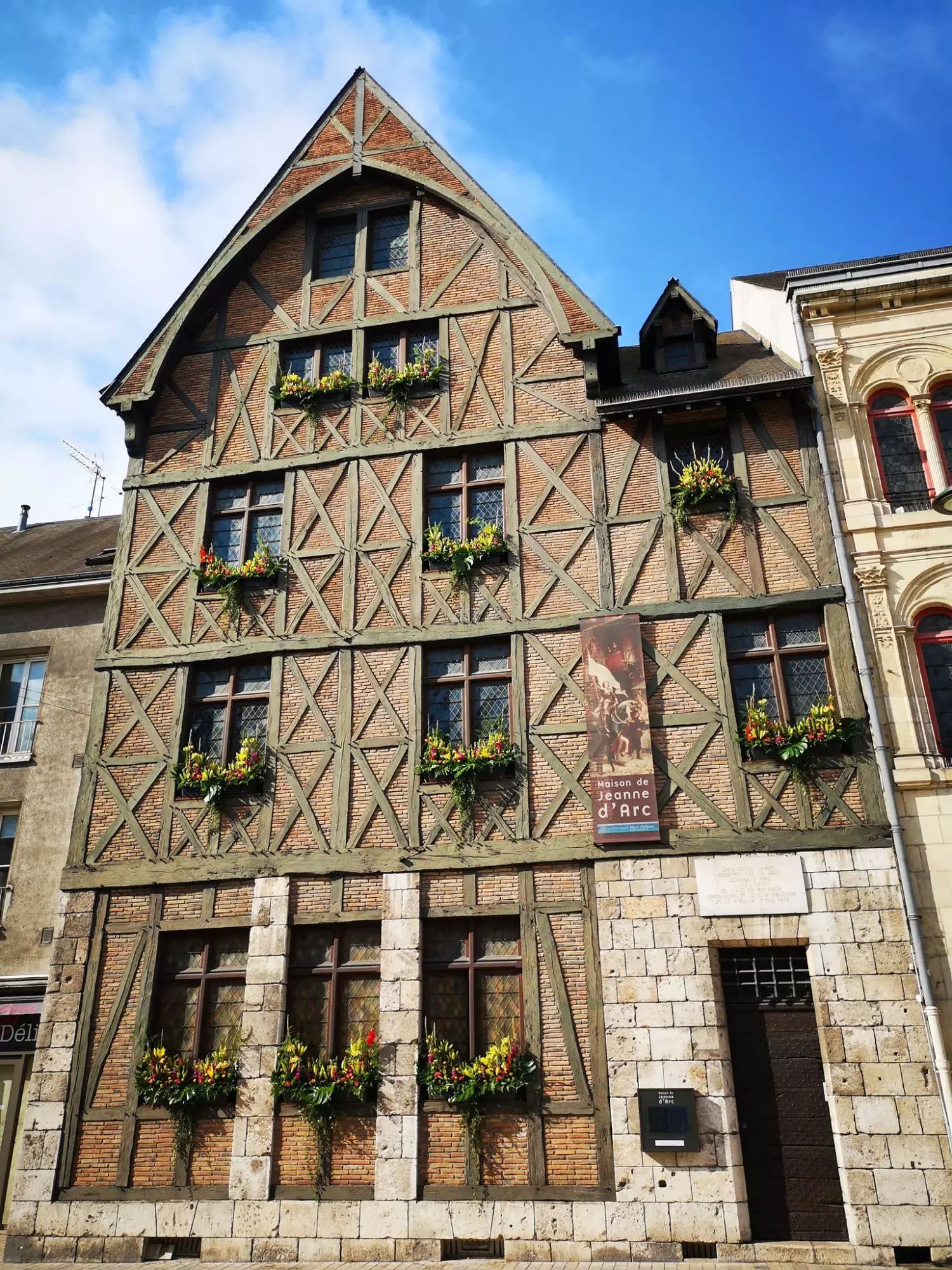
Maison de Jeanne d'Arc, in Orleans.
**PROVINS (ONE HOUR AND A HALF BY TRAIN) **
Taking the transilien P from Gare de l'Est, you don't have to wait more than an hour and a half to get to Provins, a small town of just over 10,000 inhabitants with a medieval charm that made it earn its entry into the UNESCO World Heritage list and that despite everything is still quite unknown to tourists.
Its strategic geographical location made it become, since the year 1000, an important commercial square, reaching its zenith in the twelfth and thirteenth centuries with the Champagne fairs, an annual cycle of fairs in that area of present-day France that was of capital importance at the time. The conservation of the rich architectural heritage resulting from the weight that the city reached in that period was appreciated by UNESCO to make a place for it on its list.
Over the years the municipality has grown, so you have to go to its upper part to find the historic center. Probably the first thing you notice from a distance is the César tower, an ancient tower dating precisely from the 12th century, in the heyday of the city, which you can climb for less than 5 euros.
Four towers adhere to the main one and guard the covered walkway, and from the top, where the tower changes its square shape to an octagonal one, You will have magnificent views of the rest of the city. The conical roofs that top off the towers finish giving the tower that unique look.
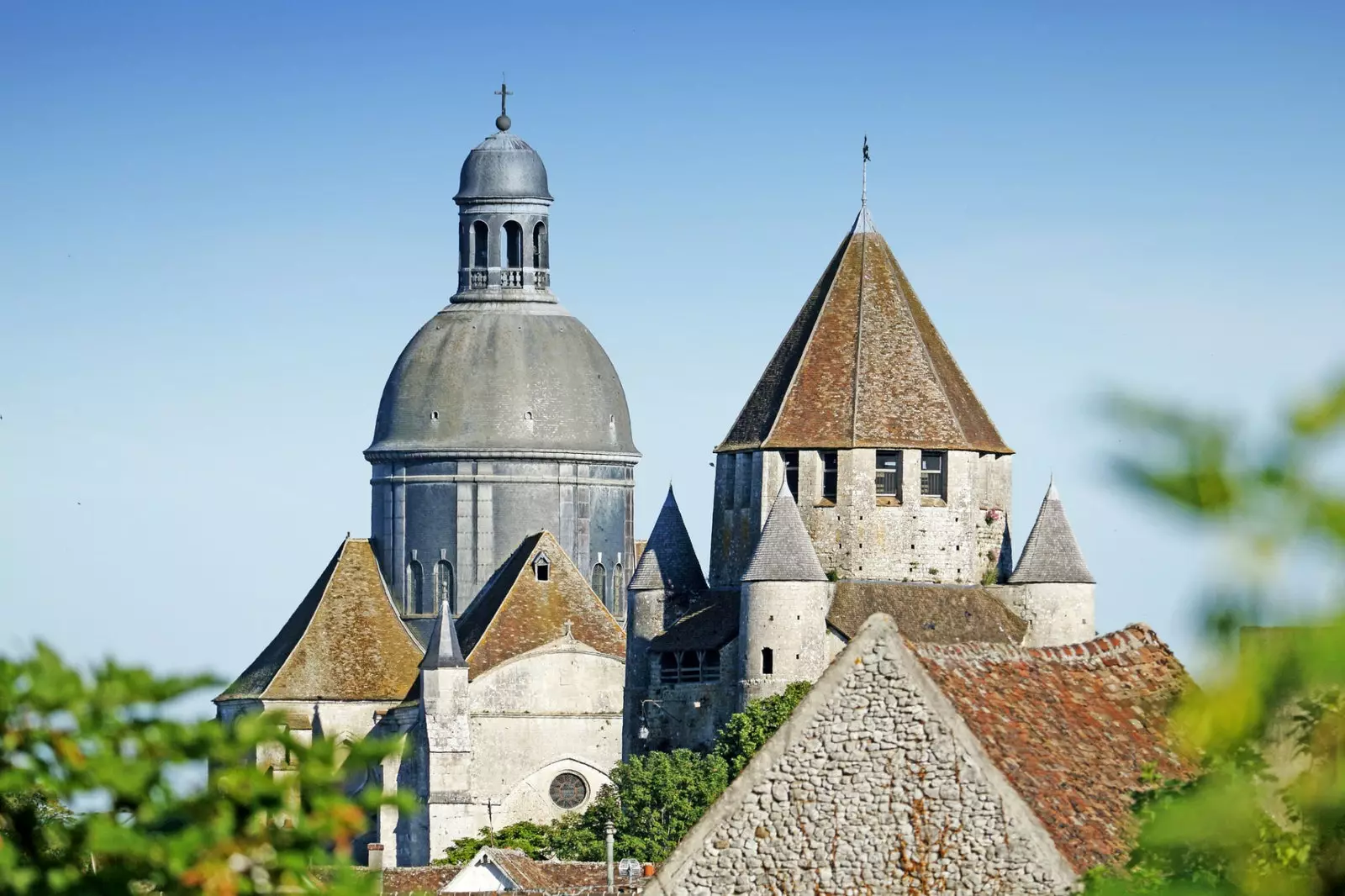
Dome of the collegiate church of San Quiriaco and Torre César, in Provins.
Less than a minute away you will come across another of the city's monuments, the collegiate church of San Quiriaco, where according to a sign at the entrance Joan of Arc and King Charles VII attended a mass in August 1429. Sturdy-looking on the outside, you'll be surprised by the amount of light that enters its corridors, even on cloudy days.
The Rue Saint-Thibault and Place Châtel, where some half-timbered buildings stand –yes, indeed, we love this architectural proposal and we are not going to stop mentioning it–, it is also a good way to immerse yourself in the medieval atmosphere of Provins.
If you are interested in not only political history, but also social and economic history, we suggest you visit the tithe barn, a building converted into a museum to learn more about merchants and various medieval trades. The fact that this 12th-century construction is built entirely on stone gives an idea of how wealthy the city was in the good old days of the Champagne fairs.
And you cannot leave Provins without discovering its impressive walls, which are in a fairly good state of preservation despite the fact that the entire perimeter is going to be rehabilitated. You can walk in some sections on these solid guardian walls and above all below, in what was formerly the moat. No detail of the doors should be lost, which, thanks to their good maintenance, allow us to guess their defensive keys.
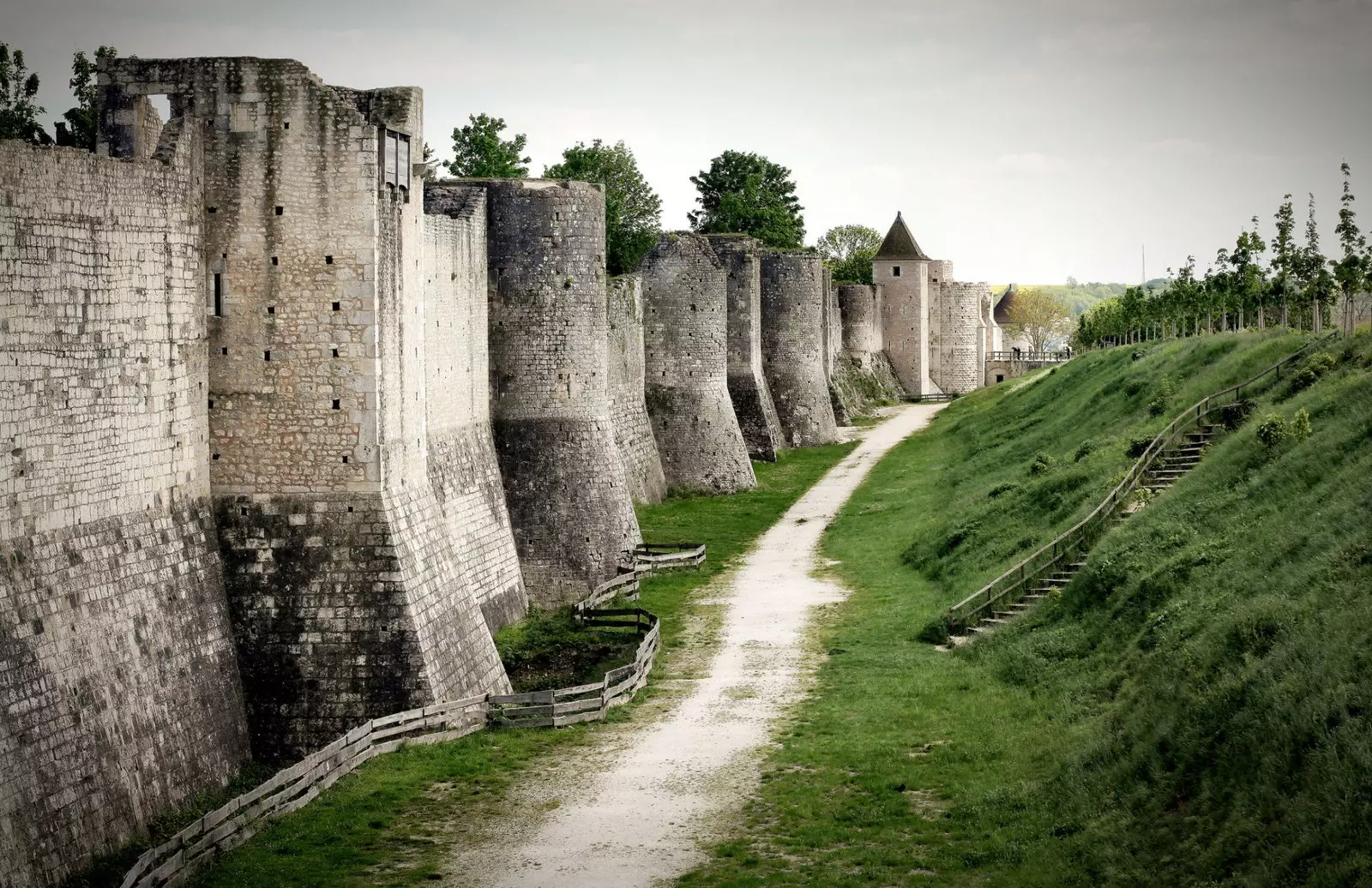
Ancient walls of Provins.
